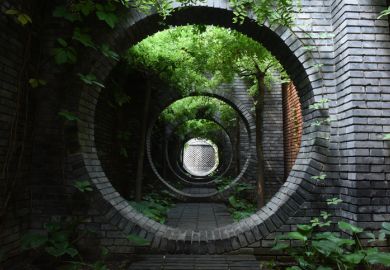The New Journal of Physics (NJP) is a general physics journal published by the Institute of Physics and the Deutsche Physikalische Gesellschaft. The first difference between the NJP and its traditional rivals is that it is a purely electronic journal with no printed version. The second difference between it and most electronic journals is that it is completely free to view, but authors pay to have their papers published. While neither of these is individualy unique in electronic publishing, both together are unusual, which makes the NJP interesting.
The future of academic journals is certainly electronic. No longer will we spend hours in the library, only to find the volume we really want is missing. Instead, we will download the papers we seek and use citation indices to find papers that reference it. This is why virtually all academic journals now have electronic versions. However, most are merely web-based versions of the paper journals and one is charged to read them. By producing an electronic version only, the NJP not only avoids the cost of printing and distribution, it allows authors to use colour pictures and the full range of multimedia attachments, all at no extra charge. Without the constraint of having paying customers for the paper version of the journal means the NJP can make itself free to view. This has intrinsic advantages for researchers in less well-off institutions. Authors pay £300 (reduced to £240 for members of the IOP and the Deutsche Physikalische Gesellschaft) to have their articles published. This fee will be waived were a paper accepted from an author unable to pay. A further advantage to a fully electronic journal is speed of publication: the NJP takes just 15 days from a paper being accepted to its being published.
There are, of course, dangers with a solely electronic journal. All the intellectual material is in one place, in this case the web-server of the IOP. When this server is down there is no way to access the journal. When you publish your paper in the NJP you are putting a great deal of faith in the IOP’s promise to keep the journal available and free to view in perpetuity. Electronic formats become obsolete. Will people be able decode your beautifully prepared and informative animated sequence in ten years’ time?
The NJP has published only 50 of the 120 papers it has been sent in the past two years, suggesting that editorial standards are reasonably high. Because it is an electronic journal, the publishers know how many times each paper has been downloaded. More than 90 per cent of papers have been downloaded more than 500 times, 50 per cent have been downloaded more than 2,000 times, and one paper has been downloaded 16,000 times. These figures suggest that people are becoming aware of the journal and that they are interested in the papers they find there. So far, only a small number of the papers have made use of the multimedia potential of the journal, but where multimedia is used the animated sequences do provide information in a clear and understandable way. The journal has recently been included in the ISI citation databases.
The IOP and the Deutsche Physikalische Gesellschaft started the NJP partly as an experiment in electronic publishing, and it cannot have made either organisation a large profit. However, I think that a physics journal that is free to view and allows authors multimedia attachments is probably a step in the right direction.
David Colling is a research physicist at Imperial College, London.
Online at: www.njp.org
The New Journal of Physics
Editor - Institute of Physics
ISBN - 1367 2630
Publisher - Institute of Physics Publishing
Register to continue
Why register?
- Registration is free and only takes a moment
- Once registered, you can read 3 articles a month
- Sign up for our newsletter
Subscribe
Or subscribe for unlimited access to:
- Unlimited access to news, views, insights & reviews
- Digital editions
- Digital access to THE’s university and college rankings analysis
Already registered or a current subscriber?



